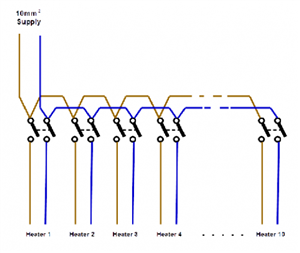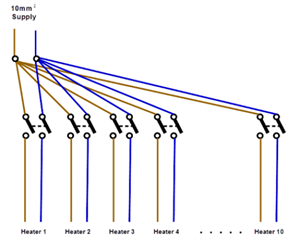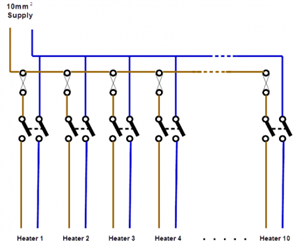Hi,
Whilst on site a few weeks ago, I noticed an electrician wired 10 vector heaters onto a 10 gangway switch.
each of the switches turned each of the heater's on.
however, all these switches were supplied by the 10mm cable I was running above the ceiling tiles.
Now I noticed each heater had a power rating of 2500 watts,
So assuming all the heater's were turned on, and given the kind of premises it was, all the heater's would be on if used, that would have been a total of 25000 watts supplied by a 10mm cable.
I'm just confused as to how he wired it,
Im pretty sure they were wired parralel, as each heater had it's own flex going straight to the switch board. Can anyone can help with a wiring diagram. It's really been bugging me.



